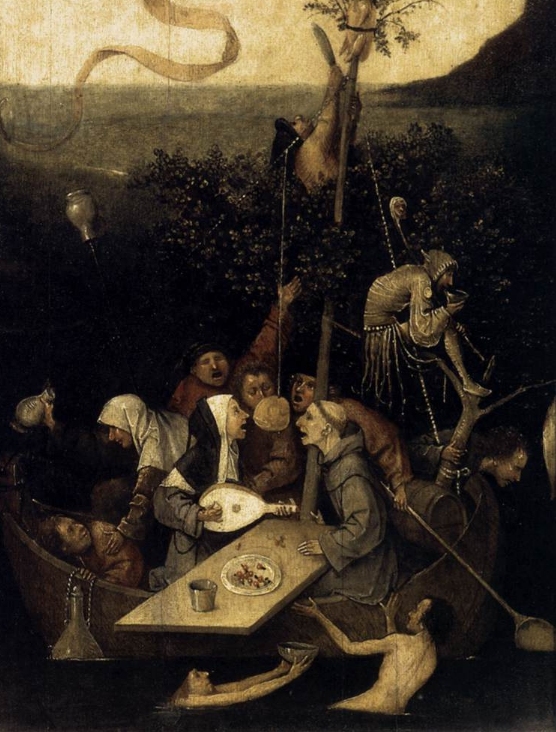“The world is a haystack, and each man plucks from it what he can.”
This is a Flemish proverb that is famously illustrated in Hieronymous Bosch’s Haywain. In the central panel of this triptych the Haywain is being pulled by demonic characters – half beast half man – towards hell.
People from all walks of life are scrabbling to grab hay from the haywain, oblivious to how it is moving them inexorably towards damnation. All manner of human weakness is portrayed by Bosch: fighting, killing, gluttony and lust. People are being crushed under the wheels of the haywain; lovers and musicians on the top of the hay are so self absorbed that they cannot see what’s happening. The rich and powerful from church and state follow on their horses. An angel gazes towards Heaven where Christ looks down with what might well be interpreted as a gesture of despair at the foolishness of mankind.
What is striking in this picture is the depiction of the clergy. On the bottom right hand of the central panel a group of nuns are busily filling a large sack with hay, watched over by a fat abbess who is comfortably seated and drinking while overseeing the work. One of the rich followers behind the haywain is clearly a bishop on a white horse.
In another of Bosches works ‘Ship of Fools’ the priest and nun are very prominent. The ship (life) drifts aimlessly while the occupants are preoccupied with their own desires and diversions.
This view of the clergy is not uncommon in medieval times.
William Langland, in his great allegorical poem, PiersPlowman, is scathing in his portrayal of of the contemporary church(14th century). He depicts friars as fraudsters and liars given to greed, drunkenness and promiscuity with courtesans and concubines.
Chaucer in his Canterbury Tales is equally cynical with his portrayal of the “fat and personable priest” who loves hunting, expensive clothes, jewellery and “a fat swan, and roasted whole.” His description of a friar is equally damning:
“He kept his tippet stuffed with pins for curls
And pocket-knives, to give to pretty girls.
…
He knew the taverns well in every town
And every innkeeper and barmaid too
Better than lepers, beggars and that crew,
For in so eminent a man as he
It was not fitting with the dignity
Of his position, dealing with a scum
Of wretched lepers; nothing good can come
Of dealing with the slum-and-gutter dwellers,
But only with the rich and victual sellers.”
Apart from the clergy’s hypocrisy, what irked and infuriated the peasant class in respect of them was the imposition of tithes on what little wealth they could glean from their labours. The church demanded a tenth of their crops and livestock each year. If they did not pay they could be punished by incarceration and excommunication. It is little wonder that peasants were attracted to some of the heretical teachings and their promoters who railed against the greed and mendacity of the established church.



